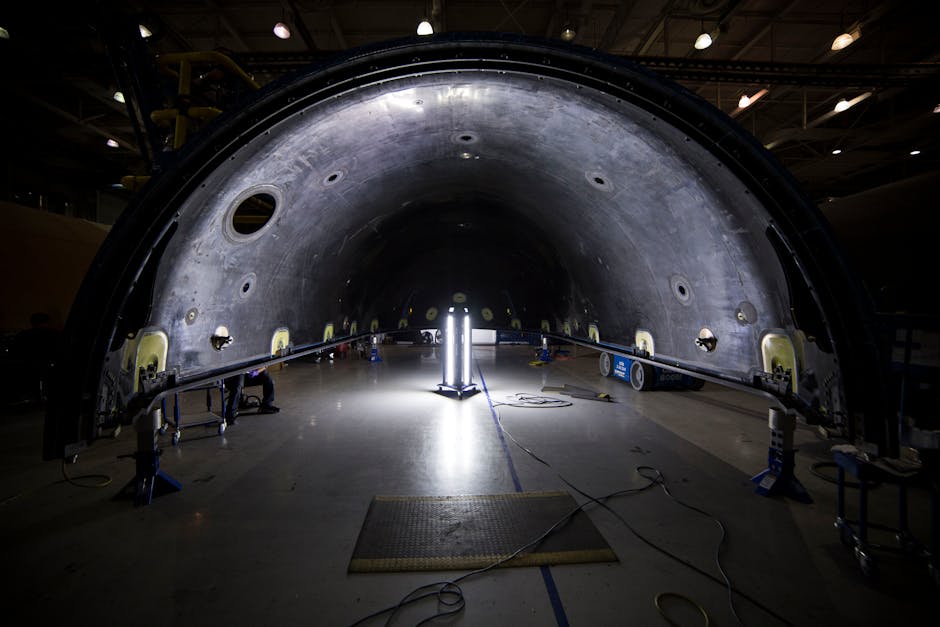Optimising Performance of Modernised Systems
As you modernise your systems, you’re likely to find that performance bottlenecks, inefficient resource allocation, and outdated architecture design principles are holding you back from realising your system’s full potential. To optimise performance, start by identifying bottlenecks through system profiling and data analytics insights. Next, allocate resources dynamically and implement efficient processing strategies. A streamlined system architecture design is also vital, with modular frameworks, simplicity, and scalability in mind. By tackling these areas, you’ll be on your way to maximising system productivity. Now, take the next step to tap your system’s full potential…
Key Takeaways
• System profiling and bottleneck identification are crucial to optimise system performance by pinpointing areas that need improvement.• Data analytics insights drive optimisation efforts and inform data-driven decisions to improve system performance.• Dynamic resource allocation and efficient processing strategies, such as parallelising tasks and optimising core utilisation, maximise system productivity.• A streamlined system architecture design that is efficient, scalable, and modular enables easier maintenance, updates, and scaling.• Continuous performance monitoring and real-time metric tracking enable swift response to anomalies and deviations, ensuring optimal system performance.
Identifying Performance Bottlenecks

When scrutinising your code, pinpointing performance bottlenecks is vital, as a single sluggish function can drag down your entire application’s speed.
You can’t just guess where the problem lies – you need a systematic approach to identify the culprits. That’s where system profiling comes in. This process involves monitoring your system’s performance under various loads, helping you pinpoint areas that need optimisation.
By using profiling tools, you can gather data on CPU usage, memory allocation, and other performance metrics.
Once you have this data, it’s time for bottleneck isolation. This involves analysing the data to identify the specific functions, modules, or components that are slowing down your system.
You must be methodical in your approach, as a single misidentified bottleneck can lead to wasted resources and time.
Leveraging Data Analytics Insights

Now that you’ve pinpointed performance bottlenecks, it’s time to supercharge your optimisation efforts by harnessing the power of data analytics.
By leveraging actionable insights, you’ll be able to make data-driven decisions that drive real results.
With real-time performance monitoring, you’ll have a finger on the pulse of your system, identifying areas for improvement and capitalising on opportunities for growth.
Data-Driven Decision Making
By leveraging data analytics insights, you can transform your decision-making process from relying on intuition to being driven by hard facts and actionable intelligence.
This shift in approach enables you to make informed decisions that propel your business forward.
Data quality plays a pivotal role in this process.
Garbage in, garbage out – the old adage holds true.
Ensuring high-quality data is essential to gaining reliable insights that inform your business strategy.
With clean and accurate data, you can identify trends, patterns, and correlations that would have otherwise remained hidden.
Real-Time Performance Monitoring
With real-time performance monitoring, you’re empowered to respond swiftly to emerging trends and anomalies, allowing you to pivot strategies before minor issues escalate into major problems.
This proactive approach enables you to optimise system performance, identify bottlenecks, and make data-driven decisions.
By leveraging real-time insights, you can:
Detect anomalies: Identify unusual patterns in system behaviour, allowing for swift corrective action.
Optimise resource allocation: Allocate resources efficiently, reducing waste and maximising performance.
Streamline system auditing: Conduct thorough log analysis to identify areas for improvement, guaranteeing that your system is running at peak performance.
Real-time performance monitoring is particularly vital in modernised systems, where the stakes are high and downtime can be costly.
By integrating system auditing and log analysis, you can gain a deeper understanding of your system’s performance and make informed decisions to drive optimisation.
With real-time performance monitoring, you’re not just reacting to problems – you’re anticipating and preventing them.
Optimising System Resource Allocation

To maximise system efficiency, allocate resources dynamically, shifting them between tasks to guaranty that each process receives the necessary support to operate at peak performance.
This approach enables you to make the most of your system’s capacity, preventing any single task from monopolising resources and slowing down the entire system.
Effective resource utilisation is key to optimising system performance.
You need to identify areas where resources are being wasted and redirect them to tasks that need them most. Capacity planning is vital in this process, as it helps you anticipate peak usage periods and allocate resources accordingly.
By doing so, you can prevent bottlenecks and guaranty seamless execution of tasks.
As you optimise resource allocation, keep in mind that it’s not just about allocating more resources, but also about allocating the right resources.
You need to strike a balance between allocating sufficient resources to support critical tasks and avoiding resource waste.
Implementing Efficient Processing Strategies

Now it’s time to turbocharge your processing power!
You’ll want to allocate resources wisely, pipe data efficiently, and parallelise tasks like a pro to get the most out of your system.
Processing Power Allocation
You’ll reap substantial performance gains by dynamically allocating processing power to tasks that need it most, effectively turbocharging your system’s productivity.
This strategic approach maximises that your system’s resources are utilised efficiently, resulting in faster processing times and improved overall performance.
To optimise processing power allocation, consider the following strategies:
-
Optimise core utilisation: Identify tasks that can be parallelised and allocate multiple cores to process them simultaneously, dramatically reducing processing times.
-
Implement resource provisioning: Dynamically allocate resources based on task requirements, guaranteeing that each task receives the necessary processing power to complete efficiently.
-
Prioritise tasks: Identify critical tasks that require immediate processing and allocate processing power accordingly, certifying timely completion of high-priority tasks.
Efficient Data Pipelining
By streamlining your data pipeline, you can further amplify the performance gains achieved through strategic processing power allocation, allowing your system to process complex tasks with unprecedented speed and agility.
Efficient data pipelining is vital in modern systems, where data-intensive applications rely on seamless data flow to deliver results.
To optimise your pipeline, focus on data serialisation, which enables efficient data packaging and transmission. This facilitates that your system can process data in a continuous flow, minimising idle time and maximising throughput.
Another critical aspect of efficient data pipelining is pipeline synchronisation. By synchronising your pipeline, you can guaranty that data is processed in a coordinated and orderly fashion, eliminating bottlenecks and reducing latency.
This harmonious data flow enables your system to tackle complex tasks with ease, delivering results faster and more accurately.
Task Parallelisation Techniques
To tap the full potential of your system, you need to master task parallelisation techniques, which enable your processor to tackle multiple tasks simultaneously, thereby maximising processing power and minimising idle time.
By dividing your workload into smaller, independent tasks, you can harness the full potential of multi-core processors and accelerators.
To get the most out of task parallelisation, focus on the following strategies:
-
Thread Synchronisation: Facilitate seamless collaboration amongst threads by implementing effective synchronisation techniques, such as locks, semaphores, and barriers.
-
Workload Balancing: Distribute tasks evenly across available processing units to prevent bottlenecks and maximise throughput.
-
Data Locality Optimisation: Minimise data transfer between processing units by optimising data access patterns and reducing memory latency.
Streamlining System Architecture Design

Designing a system architecture that’s both efficient and scalable requires careful consideration of every component’s role and interaction, as even the slightest redundancy or misalignment can substantially hinder performance. You can’t afford to have bloated or poorly integrated components holding you back. To avoid this, focus on design simplicity and modular frameworks that allow for easy updates and modifications.
| Design Principle | Benefits |
|---|---|
| Modular Frameworks | Easier maintenance, updates, and scaling |
| Design Simplicity | Reduced complexity, improved readability |
| Component Isolation | Faster debugging, reduced dependencies |
Monitoring Performance Metrics Continuously

As you forge ahead with your optimised system architecture, you’ll want to keep a hawk’s eye on performance metrics, tracking every nuance to guaranty your design stays on course.
Continuous monitoring is crucial to ensure your system performs optimally and adapts to changing demands. You can’t afford to let your system drift off course, not even for a moment.
To maintain peak performance, you’ll need to conduct regular system audits, scrutinising every aspect of your system’s performance.
This involves:
Fine-grained metric tracking: Break down performance metrics into granular components, allowing you to pinpoint areas of improvement and optimise with precision.
Real-time monitoring: Keep a close eye on system performance in real-time, enabling swift response to anomalies and deviations.
Automated alert systems: Set up alerts to notify your team of performance dips or irregularities, ensuring prompt corrective action.
Conclusion
As you stand at the helm of your modernised system, the finish line is finally within sight.
Like a master conductor, you’ve expertly orchestrated the symphony of performance optimisation, harmonising data analytics, resource allocation, processing strategies, and architecture design.
Now, as you monitor performance metrics, the sweet melody of efficiency resonates throughout your system, a true masterpiece of streamlined operations.
Contact us to discuss our services now!
